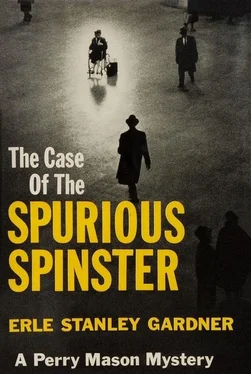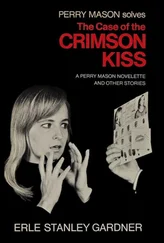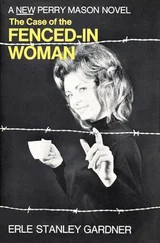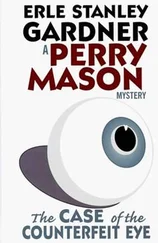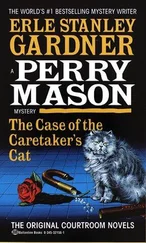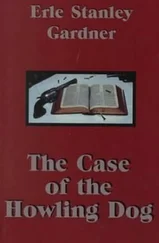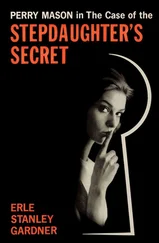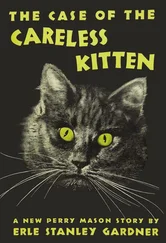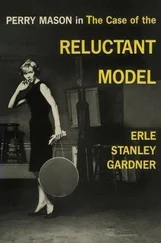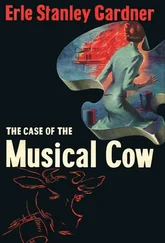Elizabeth Dow, a woman who had an angular figure which she made no attempt to improve in any way, came striding flat-footed to the witness stand. She sat with immobile features as she awaited questions after giving her name, address, and occupation.
“You are familiar with Carleton Campbell, the seven-year-old son of Endicott Campbell, the witness who has just testified?”
“Yes.”
“Do you have some official connection with him?”
“I am his governess.”
“Were you such on Saturday, the third of this month?”
“Yes.”
“Did you take him to the office of the Corning Mining Company on the morning of the third?”
“I did.”
“Who was there?”
“Susan Fisher, the defendant.”
“Was there some conversation between Susan and Carleton?”
“Yes.”
“You overheard this conversation?”
“Yes. Some of it.”
“Was Carleton carrying anything when he came to the office?”
“Yes.”
“What was it?”
“A shoe box.”
“Do you know of your own knowledge what was in that shoe box?”
“I do.”
“What was it?”
“A pair of black patent-leather dress shoes belonging to Endicott Campbell.”
“How do you know what was in there?”
“There was some conversation before we left the house between Carleton and his father about a treasure box and Carleton asked his father if he could trade treasures. Carleton thought he had his father’s permission to take this shoe box.”
“There was only the one box?”
“That’s right, only the one box that Carleton took from the house.”
“Now, how do you know what was in it?”
“After we were in the automobile I took occasion to untie the box when Carleton was not looking. I wanted to find out just what was in it because naturally I felt in a way responsible.”
“What was in it?”
“As I have stated, just a pair of black shoes.”
“That’s all. You may inquire,” Harrison Flanders said with a little bow to Perry Mason.
“You were driving the car at the time?” Mason asked.
“I was not driving the car,” she said. “I was in the car behind the steering wheel. I started the car, then I asked Carleton where his coat was. He had forgotten and left it in the house. I told him to go and get it. While he was in the house getting the coat I took occasion to untie the box.”
“The box was tied up?”
“Yes.”
“What was it tied with?”
“Some sort of a cord. I think it was a piece of fish line.”
“And you looked inside the box?”
“I did.”
“And then tied it up again?”
“Yes.”
“And from there, where did you drive?”
“Directly to the office.”
“Why did you go to the office?”
“I knew that the defendant intended to be there and I wanted to ask her to keep an eye on Carleton while I did some personal errands. I asked her to do that as a favor to me.”
“And she consented?”
“Yes.”
“Now, is there any chance that the shoe box could have been substituted at any time?”
“Not before we got to the office, no, sir. Carleton had that same shoe box with him and took it into the office. Any substitution would necessarily have been made by the defendant.”
“That’s all,” Mason said.
“Call Frank Golden,” Flanders said.
Golden was sworn and gave his occupation as proprietor of a branch of the We Rent M Car Company.
“Directing your attention to Sunday, the fourth of this month, did you see the defendant?”
“I did.”
“Did you have any conversation with her?”
“Yes.”
“And did you complete any transaction with her?”
“Yes.”
“What was the transaction?”
“I rented her one of our units, a car designated on our books as Car Number 19.”
“What time did you rent that car to her?”
“At six thirty.”
“And did she return it to you?”
“Yes.”
“At what time?”
“Our records show that it was eight fifteen.”
“And that car was designated on your books as Car Number 19?”
“Yes.”
“Is there a number painted on that car?”
“There is. It is rather inconspicuous but it has a painted figure of Number 19.”
“Later on that evening did you have occasion to rent that car to anyone else?”
“Yes.”
“Who?”
“To Mr. Perry Mason, the attorney for the defendant.”
“What time was that?”
“Just before I was closing. Sometime around — oh, a few minutes before eleven. I put it on the books as ten-thirty because that’s the official time of closing.”
“When you saw the defendant how was she dressed?”
“She was wearing a raincoat, a sweater, slacks, and a man’s hat; a broadbrimmed hat that was pulled down over her eyes. I thought at first she was a man but after she talked with me I saw, of course, she was a woman. And then of course I identified her from her driver’s license.”
“She showed you her driver’s license?”
“Yes. That’s necessary in order to rent a car.”
“And your records show the name on that driver’s license?”
“Yes, sir. The name of Susan Fisher, the defendant in this case.”
“When did you finally get the car back again?”
“It was on the afternoon of the fifth. It was returned by the police. I was notified that the police had taken possession of the car.”
“That’s all. You may inquire,” Flanders said.
“No questions.”
“Call Myrton Abert,” Flanders said.
Myrton Abert gave his address and occupation and testified that after midnight, Sunday, at an hour around 12:30 to 1 o’clock Monday morning, he had been called by Perry Mason and Paul Drake to take fingerprints from a car; that he had noted the license number of the car and also the number 19 painted in an inconspicuous place. That he had lifted a series of fingerprints and delivered them to Perry Mason; that he had stipulated, however, that in the event the car was concerned in any crime he would make the information available to the police and that he had taken photographs of the fingerprints; that those photographs had been turned over to the police; but that prior to the time they had been turned over to the police, the police had appeared with a set of fingerprints purporting to come from Ken Lowry, the decedent, and that one of those fingerprints — that of the right middle finger — coincided with a latent print which had been lifted from the automobile on the back of the rearview mirror; that the witness was a fingerprint identification expert and had made the identification; that there could be no question that this print had been made by the middle finger of the right hand of the decedent.
“Cross-examine,” Flanders snapped.
“No questions,” Mason said.
“Call Lieutenant Tragg,” Flanders said.
Lt. Tragg took the stand, testified to receiving a phone call from Perry Mason reporting the finding of a body at the place shown in the map indicating an area on Mulholland Drive; that he had first ordered a radio car to proceed to the place at once and see that the evidence was preserved. Then he himself with a deputy coroner, a photographer, and a technical expert had gone to the place; that there they found the body of Kenneth Lowry.
Tragg introduced various photographs and identified them.
“How long had the body been there? How long since death had taken place?”
“A very short time,” Lt. Tragg said. “I will leave it to the autopsy surgeon to fix the exact time, but death had been quite recent.”
“Now then, did you, in the course of your examination, look for automobile tracks in the vicinity of the body?”
Читать дальше
